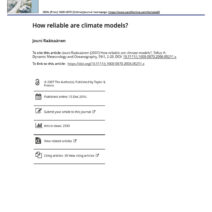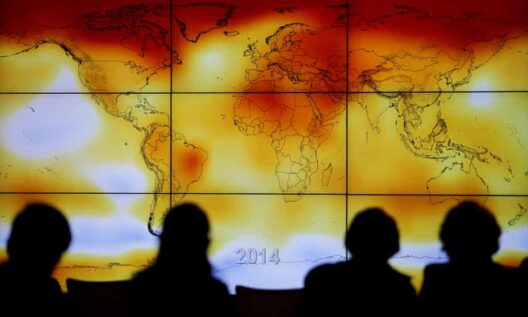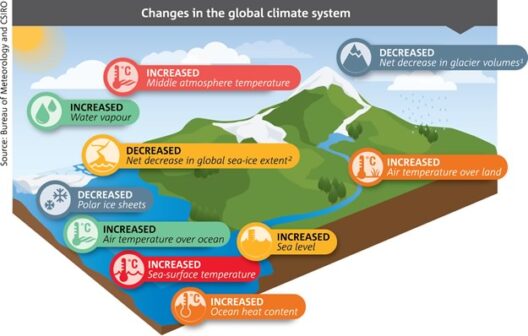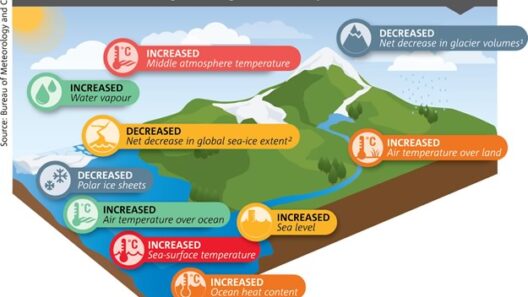Global warming remains one of the most pressing issues of our time, and as such, the role of education in addressing and mitigating its impacts cannot be overstated. Within this context, A-Level geography serves as a critical pillar for fostering understanding and awareness regarding climate change. But what happens when students leave their classrooms equipped with knowledge and confront the challenging realities of climate action in their communities? How effectively can the theoretical aspects learned in an educational setting translate into tangible efforts against global warming? This article explores the intricate relationships between A-Level geography curricula, student engagement, and community responses to climate change.
A-Level geography encompasses a wide array of topics, including human, physical, and environmental geography. Among these, the study of climate change is particularly significant. Students delve into the causes and effects of global warming, scrutinize anthropogenic influences, and analyze patterns that reveal how climate change disproportionately impacts vulnerable populations. The content equips students to understand the complexity of climate systems and the myriad factors that contribute to shifts in global temperatures.
In many A-Level geography programs, the syllabus features comprehensive discussions on climate change concepts such as greenhouse gas emissions, energy consumption, and deforestation. Students learn to interpret climate data and engage with various geographical models, providing a solid foundation upon which they can build their understanding. However, education extends beyond rote memorization of facts; it’s about inspiring critical thinking and fostering a sense of agency among young scholars.
But here’s a playful question: If students are taught about climate science and the dire consequences of inaction, why do so many individuals struggle to adopt sustainable practices in their daily lives? This disparity sparks a significant, albeit challenging, inquiry into the efficacy of education as a precursor to actionable change. While classrooms may educate students on the theoretical underpinnings, the disconnect between knowledge and practice can often be attributed to a lack of practical resources, societal norms, and personal motivations.
To tackle this dilemma, geography educators must prioritize hands-on learning experiences—those that bridge the gap between classroom lessons and real-world applications. Field trips to local ecosystems, for instance, can illuminate the effects of climate change on biodiversity and local weather patterns. Furthermore, engaging in community projects that focus on sustainability fosters a sense of responsibility. Whether it’s participating in tree planting initiatives or collaborating with local governments on waste reduction plans, these experiences empower students to become advocates for change.
Moreover, the integration of modern technology further enhances students’ learning experiences. Geographic Information Systems (GIS), for example, offer dynamic tools for analyzing data on climate trends and their impacts on specific locales. When students visualize changes in land use or carbon emissions, the information becomes not only more accessible but also more compelling. Students are more likely to internalize data when it tells a story about their homes, their communities, and their futures.
While educational institutions play a pivotal role in shaping climate-conscious individuals, students are also influenced by broader societal factors. Peer dynamics, family attitudes towards conservation, and media representation of climate issues can all sway behavioral patterns. Discussions about societal norms are essential; they allow students to confront challenges realistically and offer insights into how collective behavior can be transformed. Schools must foster an environment where sustainable habits are normalized, encouraging students to advocate for eco-friendly practices both within and outside educational contexts.
The responsibility of promoting sustainability transcends the boundaries of educational institutions. Collaboration between schools and local communities can create momentum for positive environmental change. Partnerships with environmental organizations, local governments, and businesses can provide students with the resources they need to engage meaningfully with climate action. Whether through internships, volunteer opportunities, or mentorship programs, facilitating student involvement in the community fosters a sense of belonging and relevance in addressing climate challenges.
Importantly, addressing climate change also necessitates discussions that encompass social justice components. The intersectional approach to climate education elucidates how marginalized communities often bear the brunt of climate impacts despite contributing the least to global emissions. By incorporating discussions about equity and ethics into geography curricula, students are better prepared to advocate for inclusive solutions that account for social disparities. This can be particularly powerful when students engage in discussions about climate policy reforms aimed at achieving environmental justice.
As students transition from academic settings into active citizenry, geographic education empowers them to critically evaluate existing policies and advocate for innovative solutions. The analytical skills students cultivate through learning about climate change enable them to contribute to solutions that address environmental degradation and restore ecological balance. When they encounter obstacles, their education equips them with the tools to push forward. Resilience in the face of challenges becomes a hallmark of the educated youth in environmental activism.
In conclusion, the fabric of A-Level geography education is woven intricately with threads of climate awareness, community engagement, and social justice. While the academic insights gleaned from classrooms provide a launching pad for potential climate activists, it is the real-world application of this knowledge that ultimately determines its impact. Throughout this journey from classrooms to climate action, students are encouraged to convert their understanding into activism in their surroundings, stirring a wave of collective responses to global warming. The true challenge lies in ensuring that the principles of sustainability learned in school resonate beyond the confines of textbooks and examinations and inspire a lifelong commitment to preserving our planet.






